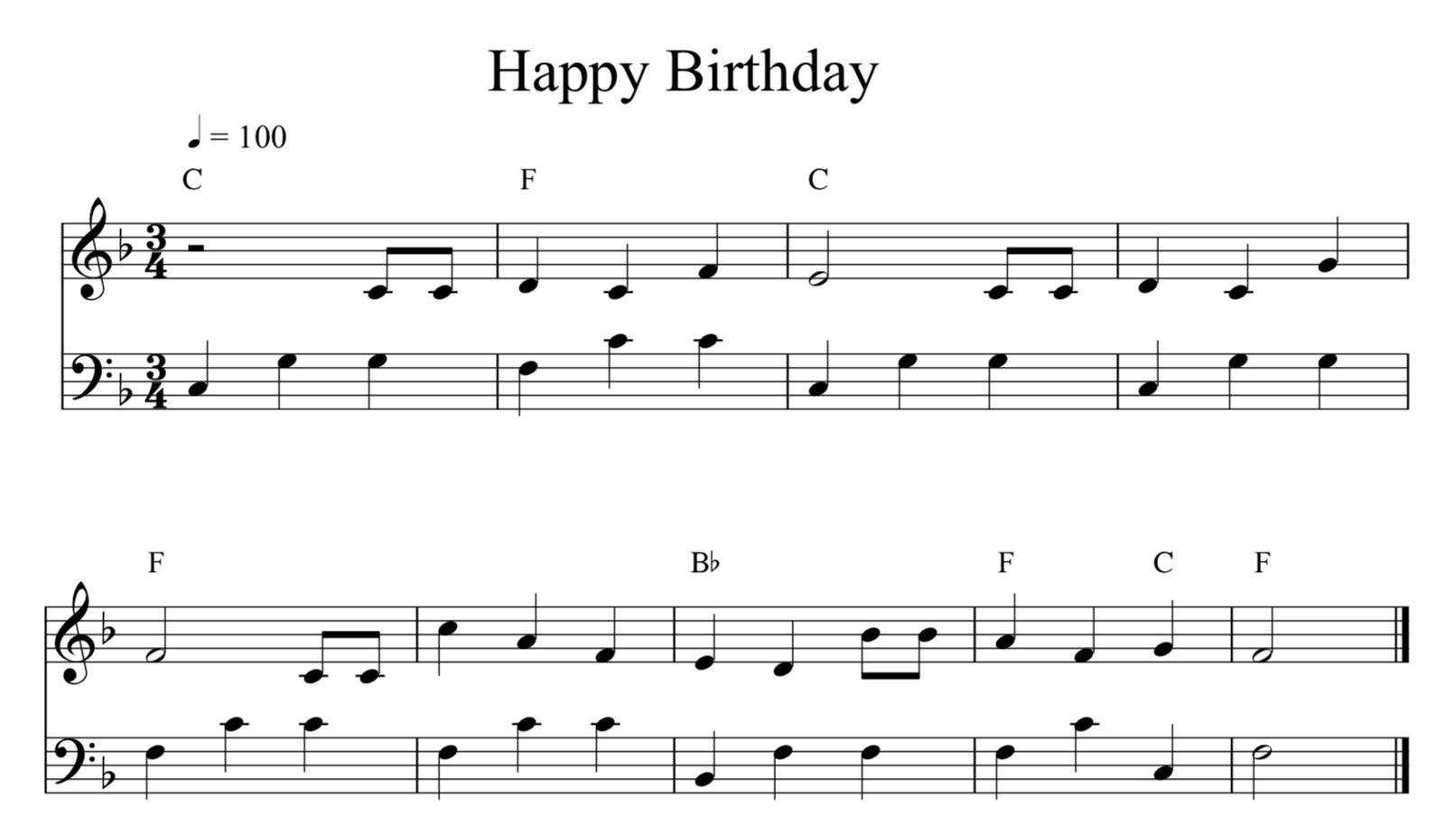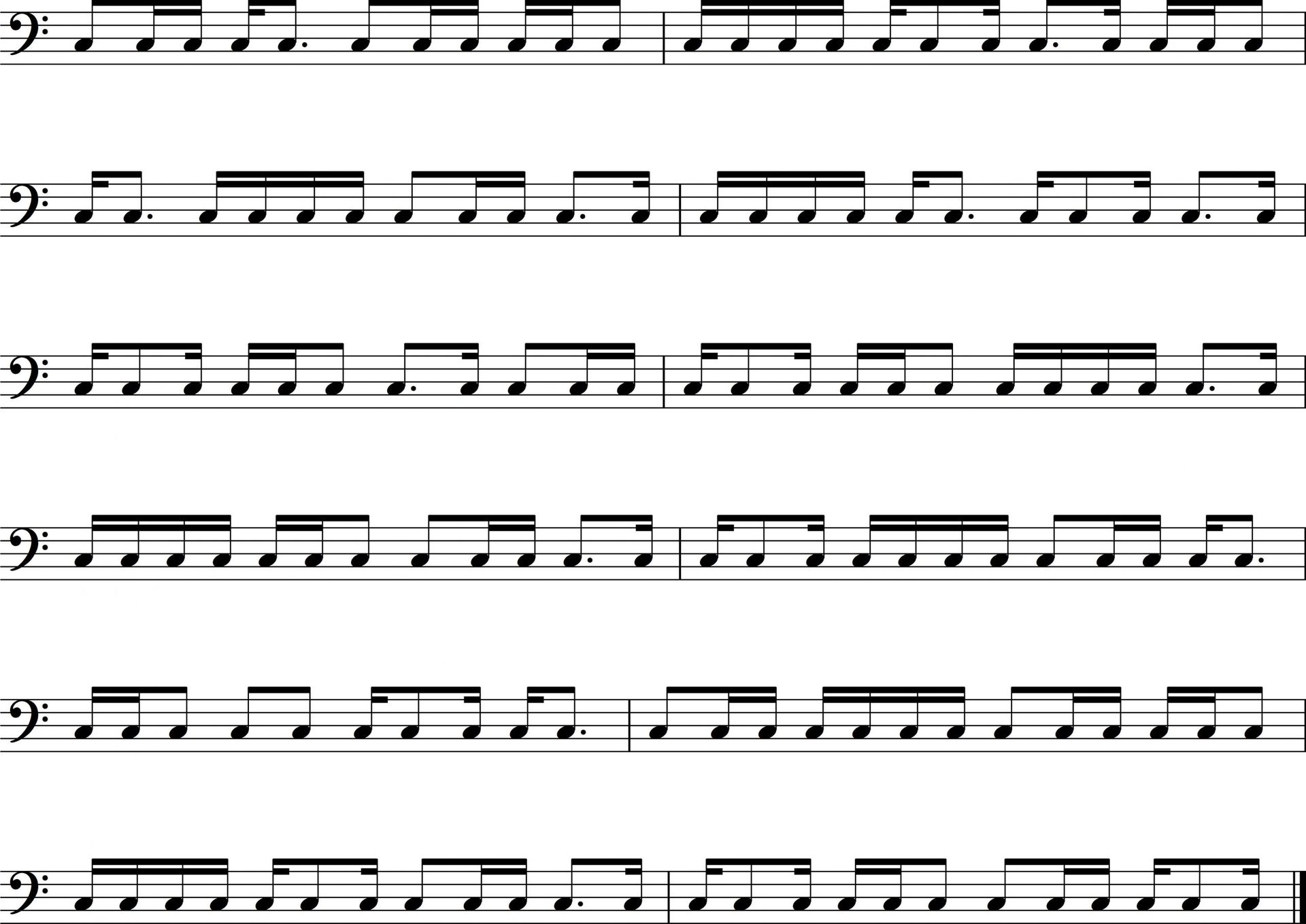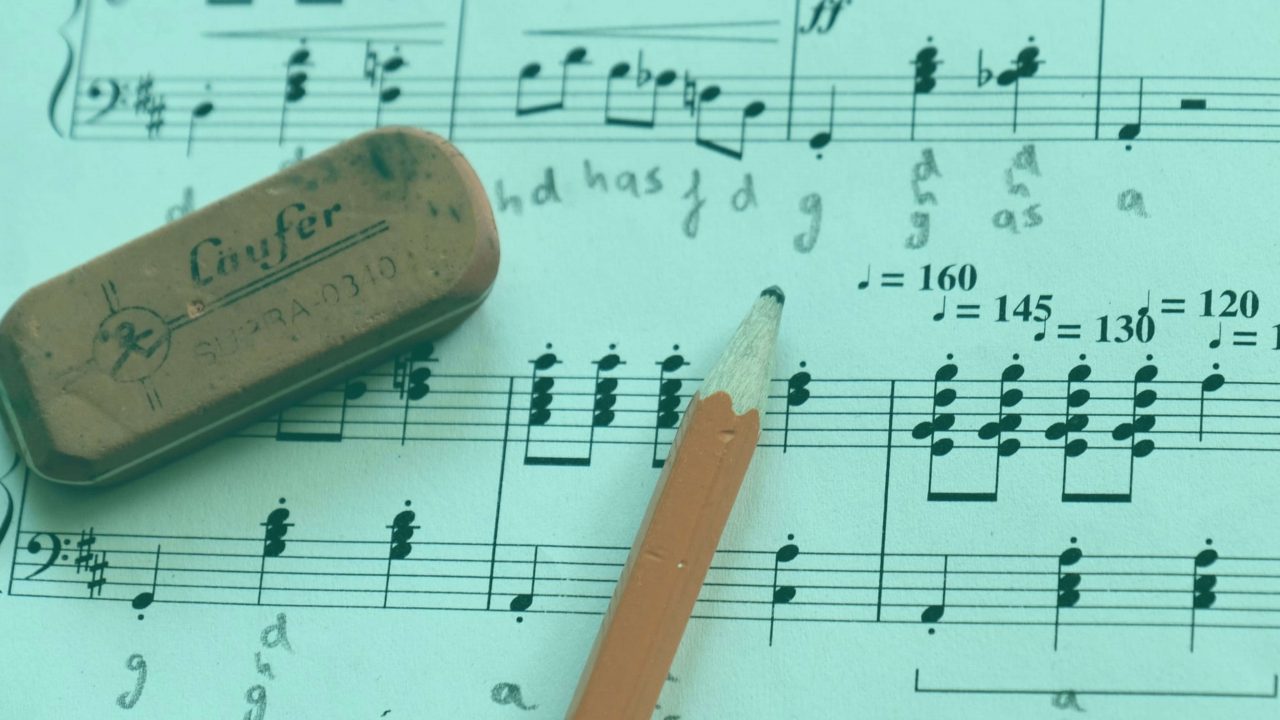Home>Events & Info>Note>What Is The Root Note Of Music


Note
What Is The Root Note Of Music
Published: December 5, 2023
Discover the fundamental element in music with our guide on the root note. Gain a deeper understanding of note relationships and how they shape melodies and harmonies.
(Many of the links in this article redirect to a specific reviewed product. Your purchase of these products through affiliate links helps to generate commission for AudioLover.com, at no extra cost. Learn more)
Table of Contents
Introduction
In the world of music, there are many elements that come together to create beautiful harmonies and captivating melodies. One of the most fundamental aspects of music is the root note. It is the foundation upon which the entire musical composition is built. Understanding the concept of the root note is crucial for musicians and music enthusiasts alike. It not only helps in creating harmonies but also plays a significant role in creating chords and melodies.
Simply put, the root note is the starting point or the reference point for any musical composition. It is the note from which all other notes in a chord or a melody are derived. The root note gives the sense of stability and establishes the tonal center of a piece of music. Without the presence of a clear root note, the music may sound dissonant or lack direction.
Whether you are a budding musician or a curious music lover, understanding the importance of the root note can greatly enhance your musical journey. It gives you a deeper insight into how melodies and harmonies are constructed, and allows you to appreciate the complexity and beauty of the music you listen to.
Understanding the Concept of Root Note
The root note is essentially the starting point or the foundational note in a musical composition. It serves as a reference point for all the other notes in a chord or a melody. Think of it as the anchor that holds the musical piece together. Without a clear root note, the music can sound disorganized and lack structure.
When we talk about a root note, we are referring to a specific pitch or tone. In Western music notation, these pitches are represented by letters A through G, with each letter corresponding to a specific note on a musical scale. The root note gives the music a sense of tonality, establishing the key of the composition.
It’s important to note that the root note is not limited to a single instrument. In fact, it applies to every instrument and voice in a musical ensemble. Whether you’re playing the piano, guitar, or singing, the root note remains the same for everyone involved.
One of the key aspects of the root note is its relationship with other notes in a chord. The root note determines the quality of the chord and indicates the overall feel and mood of the music. For example, in a major chord, the root note is combined with a third and a fifth note, creating a bright and uplifting sound. In contrast, a minor chord has a slightly different combination of notes, creating a more melancholic or somber tone.
Understanding the concept of the root note is essential for musicians and composers. It allows them to build chords and melodies with coherence and musicality. By starting with a clear root note, they can explore different harmonies and variations, creating unique and memorable musical compositions.
Importance of Root Note in Music
The root note plays a crucial role in music and has a significant impact on the overall composition. Here are some key reasons why the root note is important:
- Establishing Tonal Center: The root note establishes the tonal center of a musical piece. It sets the key and provides a point of reference for the listener. Without a clear root note, the music can sound ambiguous and lack a sense of coherence.
- Creating Chords: The root note is essential for constructing chords. It forms the foundation on which chords are built, determining their quality and tonality. By combining the root note with other notes, musicians can create a range of chords, each with its own unique sound and emotion.
- Giving Direction: The root note gives the music a sense of direction and purpose. It serves as a guide for the listener, leading them through the harmonic progression of the composition. Without a clear root note, the music can lack a sense of progression and may sound aimless.
- Creating Melodies: The root note is also important in creating melodies. It serves as a starting point from which melodies are developed and expanded upon. By using different intervals and variations around the root note, musicians can create captivating and memorable melodic phrases.
- Enhancing Emotional Impact: The choice of root note can greatly influence the emotional impact of a piece of music. Different root notes evoke different emotions and moods. For example, a piece composed in a major key with a root note of C may sound uplifting and joyful, while the same melody in a minor key with a root note of A can sound melancholic and sorrowful.
In summary, the root note plays a crucial role in establishing the tonality, creating chords, giving direction, shaping melodies, and enhancing the emotional impact of a musical composition. It serves as the foundation on which music is built, providing structure, coherence, and a point of reference for both the musicians and the listeners.
Finding the Root Note
Finding the root note in music can be accomplished using various techniques, depending on the instrument or context. Here are a few methods commonly used to identify the root note:
- Using Ear Training: Ear training is a valuable skill that can help musicians identify the root note by listening to the music. With practice, you can train your ears to recognize the tonal center and identify the root note by focusing on the pitch and the sense of resolution.
- Referencing Sheet Music or Chord Charts: If you have access to sheet music or chord charts, the root note is often indicated at the beginning of the piece or above the chord symbols. This is particularly helpful if you are learning a song or working with written music.
- Using a Tuning Device: For instruments such as guitar or piano, a tuning device can help you find the root note by detecting the pitch of the strings or keys. By matching the desired pitch, you can identify the root note and tune your instrument accordingly.
- Understanding Chord Progressions: In many cases, the root note can be determined by analyzing the chord progression. The first chord of a progression is often the root chord, and subsequent chords can be identified based on their relationship to the root chord.
- Identifying the Bass Note: In music, the bass often plays the root note or provides a strong indication of it. By listening to the bass line or analyzing the lowest notes in the music, you can often determine the root note.
It’s important to note that finding the root note can sometimes be subjective, as it depends on the context and interpretation of the music. Different musicians may have varying interpretations of the root note, especially in more complex compositions.
Overall, finding the root note involves training your ears, using reference materials, analyzing chord progressions, considering the bass notes, and using tuning devices. By mastering these techniques, you’ll be able to confidently identify the root note in any musical piece or performance.
The Role of the Root Note in Chords
The root note plays a vital role in creating and understanding chords. It serves as the foundation upon which chords are built and determines their quality, tonality, and emotional impact. Here are some key aspects of the root note’s role in chords:
- Etablissement of Tonality: The root note establishes the tonality of a chord. It provides the fundamental pitch from which other notes in the chord are derived. For example, in a C major chord, the root note is C, and the other notes are built around it. The root note gives the chord its sense of stability and tonal center.
- Determining Chord Quality: The root note determines the quality of a chord. Different root notes in combination with specific intervals and note combinations create chords with different qualities. For instance, a major chord is constructed using a root note, a major third, and a perfect fifth, while a minor chord uses a root note, a minor third, and a perfect fifth.
- Identifying Inversions: Inversions are alternate positions of a chord where a note other than the root becomes the lowest note. The root note serves as the reference point to identify inversions. In a root position, the root note is the lowest in the chord. In first inversion, the third becomes the lowest note, and in second inversion, the fifth becomes the lowest note.
- Creating Harmonic Movement: The root note guides the progression and movement between chords. It acts as a point of reference for chord changes and helps create a sense of musical tension and resolution. The movement of the root note in chord progressions contributes to the overall flow and structure of a musical piece.
- Defining Chord Progressions: Chord progressions are sequences of chords that create musical phrases and structures. The root note plays a significant role in defining chord progressions. It provides a sense of direction and determines the relationship between different chords within the progression.
Understanding the role of the root note in chords is essential for musicians and composers. It enables them to create harmonically rich compositions, experiment with different chord qualities, and establish a strong tonal framework. By harnessing the power of the root note, musicians can create a wide range of expressive and captivating chord progressions.
Root Note and Melodies
The root note plays a crucial role in shaping melodies and giving them a sense of tonality and structure. It serves as a starting point and reference for creating melodic phrases. Here’s how the root note influences melodies:
- Establishing Tonality: The root note provides the tonal center for a melody. It sets the key and gives the melody a sense of stability and resolution. All other notes in the melody revolve around the root note, creating a harmonic and melodic relationship.
- Creating Harmonic Tension and Release: Melodies often contain notes that create tension and require resolution. These tension notes are usually a step away from the root note, creating a sense of anticipation. When resolved back to the root note, the tension is released, giving the melody a satisfying and pleasing sound.
- Guiding the Melodic Contour: The choice of the root note influences the overall shape and contour of the melody. Different root notes evoke different emotions and moods, which in turn affect the melodic choices made by the composer or musician. For example, a melody with a root note of C may have a brighter and uplifting feel, while a melody with a root note of A may have a more melancholic or mysterious vibe.
- Supporting Chord Progressions: Melodies often work in harmony with the underlying chord progressions. The root note of each chord provides a natural choice for the melody to land on, creating a strong connection between the melody and the chords. By emphasizing the root notes of the chords, the melody flows smoothly and reinforces the harmonic structure of the music.
- Creating Variation: By exploring different intervals and note choices around the root note, musicians can create melodic variations. These variations can add depth and interest to the music, making it more engaging and captivating for the listener.
The root note acts as a guiding force for melodies, allowing them to interact with the underlying harmonies and evoke specific emotions. It provides a solid foundation from which musicians can explore and experiment, creating memorable and expressive melodic lines. By understanding and utilizing the root note in melodies, musicians have the power to transport listeners on a musical journey filled with rich and captivating storytelling.
Root Note in Different Musical Scales
The root note plays a significant role in defining the musical scale. The root note determines the starting point and tonal center of a scale, shaping its unique sound and character. Here’s how the root note is integral to different musical scales:
- Major Scale: In the major scale, the root note sets the key and establishes the sense of major tonality. It forms the foundation for the seven notes that follow, each with a specific relationship to the root note. For example, in the C Major scale, C is the root note, and the other notes are built upon it in a predetermined pattern of whole and half steps.
- Minor Scale: Similar to the major scale, the root note in the minor scale establishes the key and tonality. The minor scale has a different interval pattern, giving it a distinct sound characterized by a more melancholic or somber mood. In the A Minor scale, A is the root note, and the other notes follow a specific pattern in relation to it.
- Pentatonic Scale: The pentatonic scale is a five-note scale widely used in many cultures and musical genres. The root note serves as the starting point and tonal center for the scale. The specific arrangement of intervals around the root note gives the pentatonic scale its distinctive sound, often associated with simplicity and versatility.
- Blues Scale: The blues scale is a variation of the pentatonic scale, with the addition of a “blue” note. Again, the root note in the blues scale determines the tonality and provides a starting point for improvisation and melodic expression. The blues scale is commonly used in blues, jazz, and rock music, adding a distinct flavor to the melodies.
- Modal Scales: Modal scales, such as the Dorian, Mixolydian, and Phrygian scales, are derived from the major scale. Each mode has a unique starting note, which becomes the root note for that particular scale. The modes create different tonalities and moods, allowing musicians to explore a wide range of musical expressions.
Understanding the root note within different musical scales is foundational for musicians. It helps them navigate the intricacies of tonality, chord progressions, and melody construction. By grasping the relationship between the root note and the scale, musicians can unlock endless possibilities for creativity and self-expression in their compositions.
Conclusion
The root note is an essential element in music, serving as the foundation and reference point for chords, melodies, and musical scales. It establishes the tonal center, gives direction and clarity to the composition, and influences the emotional impact of the music. Understanding the concept of the root note is crucial for musicians, as it allows for the creation of harmonies, melodies, and chord progressions that bring depth and coherence to the music.
By identifying and utilizing the root note, musicians can create powerful chord progressions that evoke different emotions and moods. It helps in establishing the tonality and key of a musical piece, guiding the listener through a structured and meaningful musical journey. Additionally, the root note plays a significant role in creating melodies, shaping their contour, and providing a sense of tonality and resolution.
The root note also plays a vital role in different musical scales, determining the starting point and tonal center of each scale. It sets the foundation for the notes and intervals that follow, creating the distinct sound and character of the scale, whether it’s a major, minor, pentatonic, or modal scale.
In conclusion, the root note is a fundamental concept in music that influences every aspect of composition. Its importance cannot be overstated, as it contributes to the coherence, structure, and emotional impact of the music. By understanding and harnessing the power of the root note, musicians can create captivating and immersive musical experiences that resonate with listeners on a profound level.











